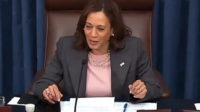In a new report, Princeton University and Australia-based engineer Worley Ltd. urge key changes to “develop and deliver the immense and unprecedented” infrastructure to reach U.S. net-zero carbon emissions targets by 2050.
Achieving net zero is technically feasible and affordable, says the Aug. 5 joint report, which follows earlier modeling by Princeton’s Andlinger Center for Energy and the Environment. But incremental fixes in traditional infrastructure delivery processes will be insufficient, researchers say. "We need to change the processes themselves."
The Princeton-Worley analysis comes as the latest UN Intergovernmental Panel on Climate Change report's 234 expert contributors warn that without major action now to reduce the current level of emissions, the average global temperature is set to reach or exceed the 1.5°C warming threshold, compared to pre-industrial levels, within 15 to 20 years—with some predicting that point by decade's end.
Energy sector carbon dioxide emissions also will rise 7% this year, fueled by more economic activity and higher natural gas prices pushing more coal consumption, particularly in power generation, the US Energy Information Administration said Aug. 10 in its Short-Term Energy Outlook. Sector emissions fell 11% in 2020 but coal-related CO2 emissions are set to increase 17% this year. While total energy emissions won't reach pre-pandemic levels, "at least in the short term," said an EIA statement, they are set to rise another 1% in 2022.
Related to the new UN report, the 4,000-page outlook endorsed by 195 global governments, is the panel's first since 2013. "It is unequivocal that human influence has warmed the atmosphere, ocean and land," says the report.
"The important issue for the AEC sector is the projected extremes," says William Wallace, a climate change engineering specialist, former CH2M Hill executive and president of Oregon-based consultant Wallace Futures Group LLC. "These extremes are moving well outside the range of what civil infrastructure projects can handle." He says that few practitioners "know how to handle the deep level of uncertainty of future climate and weather conditions, let alone the knock-on effects."
Wallace contends that the new conclusions "leave no room for the climate change deniers ... who argue that the temperature increases are natural variations."
The Princeton and Worley analysis “frames the necessary actions for the U.S. to reach net zero, and provides a starting point for how the rest of the world can do so too," says Lynn Loo, a Princeton engineering professor and Andlinger Center director. “It highlights the role of companies like Worley in executing the projects needed to navigate the energy transition."
The report "frames the necessary action for the U.S. to reach net zero, and provides a starting point for how the rest of the world can do so too. It also highlights the role of companies ... in executing projects needed to navigate the energy transition."
— Lynn Loo, Director, Princeton University Andlinger Center for Energy and Environment, and engineering department professor
Worley CEO Chris Ashton adds that "the urgent imperative is for governments and industry to shift focus to the practical challenge of delivering at a previously unimagined pace and scale of infrastructure development and engineered solutions."
Worley and Princeton are collaborating under a university-run partnership program designed to pursue transformational innovations in energy and the environment. Ashton said the partnership ties the firm's "practical experience in delivering major infrastructure projects" with the university's "detailed modeling, analysis and mapping" expertise.
Researchers developed custom algorithms to site and map "tens of thousands" of needed low carbon energy and infrastructure assets to plot the net-zero transition and determine its multiple routes to that goal using technologies that are technically feasible and now available, says Loo.
Energy Transition Scenarios Modeled
While the report estimated the cost of constructing such assets was at least $2.5 trillion by 2030, Loo says the cost of energy services as a share of GDP does not exceed historic levels, “meaning the transition is relatively affordable.”
Two scenarios were modeled: one that showed solar and wind energy growing at the 2020 rate for the next 30 years, called “constrained renewables," and one foreseeing a 100% renewables approach that ends fossil fuels entirely by 2050 and does not require carbon capture and storage (CCS) facilities.
Even with record solar installation last year of 19.2 GW, the U.S. would need to install an additional 800 MW each week to reach net zero in 30 years, according to the report. The report pointed to just one current offshore facility, while "an exemplar of solar project delivery" took about 3.5 years to complete.
Related to transmission corridors, researchers contend that with the largest current global corridor in China now estimated at 12 GW, “the U.S. will need dozens of similar or larger transmission corridors – that are both high voltage and long distance – to be built each year.”
But the report also advocates “creative solutions” to shorten the timeline. These include large-scale renewable energy hubs developed in parallel. “We could repurpose and repower existing sites where possible, retrofitting eligible power plants and industrial facilities with CCS solutions,” says the Princeton-Worley team. “Multiple projects could share pipelines and storage hubs.”
To prevent widespread “energy sprawl” for solar, wind and transmission, the report cites solutions such as rooftop and small-scale solar to reduce need for high-powered transmission lines and added land use.
Critical Upfront 'Shifts' Needed
The report notes five key “shifts” needed in planning and executing infrastructure. They include broader definitions of how infrastructure is valued to include delivery of social and environmental benefits, in addition to financial value, as well as the need to reach net zero by developing "all possible decarbonization technologies, spreading our effort and investment broadly."
Another mandatory shift would be to standardize as many aspects of a project’s design as possible, and then replicate that design, says the report.
Researchers call for streamlining all steps in the development sequence in order to cut down engineering effort and time taken for regulatory approvals. They say this would boost workforce deployment and speed up the supply chain. Common equipment standards for global use will insure renewables are "quicker to make, transport and install."
The lack of design standardization is often driven by "customers ... [who] believe in doing something a little bit different, a bit better ... for competitive advantage,” Worley's Ashton told The Australian Financial Review.
"The urgent imperative is for governments and industry to shift focus to the practical challenge of delivering at a previously unimagined pace and scale of infrastructure development. Humanity has risen to monumental challenges before."
— Chris Ashton, CEO, Worley Ltd.
The new report said other needed project shifts include countries, policy makers, industry and communities taking steps "to communicate and collaborate like never before," and more digital technology to enable and insure "transparency, trust and shared value" in the net-zero transition.
Researchers say by visualizing the impact of a project and tracking its performance, "we’ll encourage public scrutiny and, consequently, public trust."
Costs and Funding
Worley and Princeton point to recent International Energy Agency cost projections for raw materials of up to six times current levels, with shortages of key metals and minerals inflating prices.
But funding sources also are in transition, which may bode well in the changing energy sector. A "redistribution of capital ... is occurring more rapidly than I’ve seen in my 40 year career,” Ashton said.
Despite the pandemic, private investors provided a record $174 billion to renewable energy in the first half of 2021, according to an Aug. 3 study by BloombergNEF. It said growth was boosted by a record first half for new money raised on public markets, with venture capital and private equity commitments to renewable energy also rising.
The 2021 total is 1.8% more than a year earlier, said Albert Cheung, BloombergNEF head of analysis, but he noted need for "an immediate acceleration in funding ... if we are to get on track for global net zero.”
Worley, with about $8.5 billion in 2020 revenue in fiscal 2020, says energy transition projects now account for 18% of its expected project awards. The firm ranks seventh on ENR’s Top Global Design Firms list, with $4.6 billion in revenue reported.
Oil giant Royal Dutch Shell in June awarded it an engineering contract for a 200-MW electrolysis-based green hydrogen facility in Rotterdam, Holland that will include integration design with a separate offshore wind farm to be built, as well as pipelines, electrical grids and Shell’s nearby Pernis refinery. The new facility will be one of the world’s largest commercial green hydrogen production sites, set to manufacture 50,000-60,000 kg per day when operational in 2023, says Shell.
Worley also supports Chevron Australia’s Gorgon LNG site’s CO2 injection project, which will sequester 400 million tons every year in an underground reservoir off Western Australia, reducing project carbon emissions by 40%.
“We are confident in growing our sustainability business,” Daniel Paino, Worley national strategy director, told ENR. “Sustainability opportunities account for approximately 45% of projected revenue. We are seeing these opportunities accelerate." He said the firm continues "to critically assess ... the associated market opportunity in the medium to long term, with more partnerships and acquisitions explored in line with our growth strategy.”
Noting that creation of a clean-energy future "is now our most pressing challenge," the Princeton-Worley report emphasizes that “net zero doesn’t need to happen in some distant future. It needs to happen in most of our lifetimes.”






Post a comment to this article
Report Abusive Comment